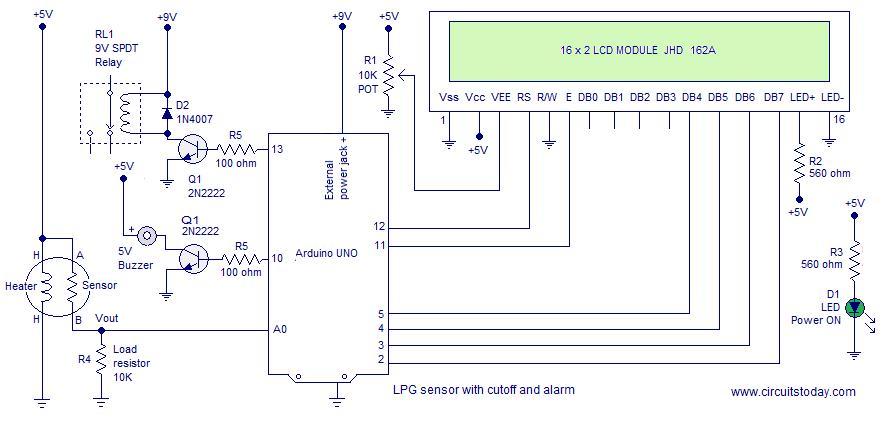In this write-up we will be talking about a simple LPG sensor. As you can see from the image below, the circuit here has been used for indicating the amount of LPG that is present in air. The circuit trips a relay and sounds an alarm as soon as the concentration of LPG crosses a predefined limit. The name of this sensor is MQ2 that we will be using in this sensor. Technically, MQ2 is a SnO2 based gas sensor that is capable of sensing harmful gases like butane, smoke, hydrogen, propane, methane, and a few others. Since, the basic ingredients of LPG are butane and propane, the MQ2 sensor can always be used for sensing LPG.

Figure 1: Circuit Diagram
The MQ2 can sense an increase in temperature as the flammable gases as these start oxidizing by some heating element. If the sample has any of these gases, their oxidation will result into temperature increase while the resistance of sensor resistor will come own. It also means that increased current will pass through the load resistor, therefore, voltage across it will also come up.
Under normal conditions, the sensor resistor will be quite high somewhere near 850K. The voltage drop vout over the load resistor will be somewhere near zero. As and when the sensor get exposed to LPG fully, the sensor resistance will drop by approx. 800 ohms while the potential difference across load resistance will come 4.62 volts. After its conversion by ADC, the digital equivalent of 4.62 volt will be somewhere near 948.
The graph you obtain may not have straight line. For absolutely correct calibration of sensor, you need to know the approx. concentration of gas in your surrounding environment.
For other details and program click on the link mentioned in the source.
Filed Under: Reviews


Questions related to this article?
👉Ask and discuss on Electro-Tech-Online.com and EDAboard.com forums.
Tell Us What You Think!!
You must be logged in to post a comment.